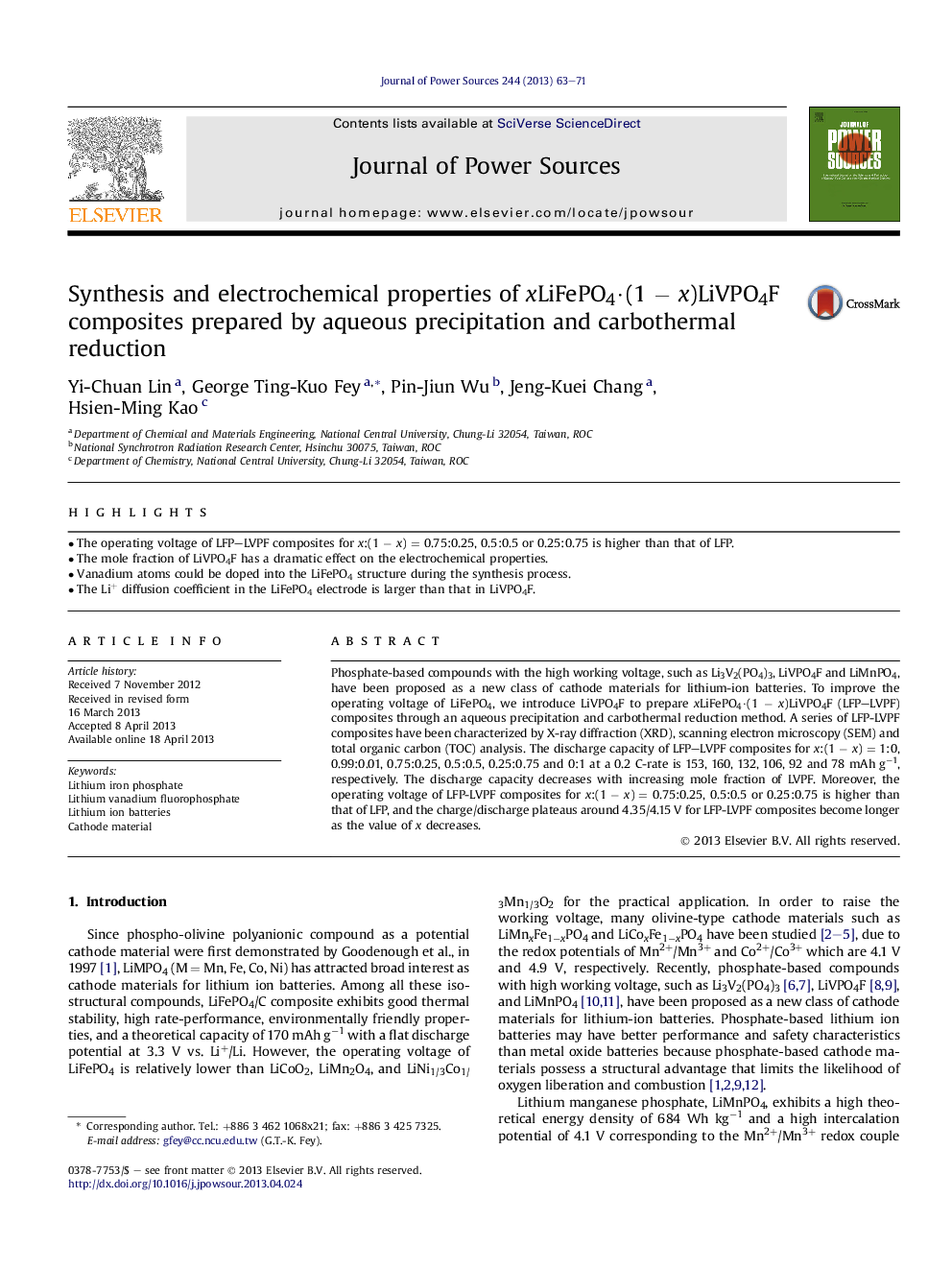| Article ID | Journal | Published Year | Pages | File Type |
|---|---|---|---|---|
| 1287444 | Journal of Power Sources | 2013 | 9 Pages |
•The operating voltage of LFP–LVPF composites for x:(1 − x) = 0.75:0.25, 0.5:0.5 or 0.25:0.75 is higher than that of LFP.•The mole fraction of LiVPO4F has a dramatic effect on the electrochemical properties.•Vanadium atoms could be doped into the LiFePO4 structure during the synthesis process.•The Li+ diffusion coefficient in the LiFePO4 electrode is larger than that in LiVPO4F.
Phosphate-based compounds with the high working voltage, such as Li3V2(PO4)3, LiVPO4F and LiMnPO4, have been proposed as a new class of cathode materials for lithium-ion batteries. To improve the operating voltage of LiFePO4, we introduce LiVPO4F to prepare xLiFePO4·(1 − x)LiVPO4F (LFP–LVPF) composites through an aqueous precipitation and carbothermal reduction method. A series of LFP-LVPF composites have been characterized by X-ray diffraction (XRD), scanning electron microscopy (SEM) and total organic carbon (TOC) analysis. The discharge capacity of LFP–LVPF composites for x:(1 − x) = 1:0, 0.99:0.01, 0.75:0.25, 0.5:0.5, 0.25:0.75 and 0:1 at a 0.2 C-rate is 153, 160, 132, 106, 92 and 78 mAh g−1, respectively. The discharge capacity decreases with increasing mole fraction of LVPF. Moreover, the operating voltage of LFP-LVPF composites for x:(1 − x) = 0.75:0.25, 0.5:0.5 or 0.25:0.75 is higher than that of LFP, and the charge/discharge plateaus around 4.35/4.15 V for LFP-LVPF composites become longer as the value of x decreases.
